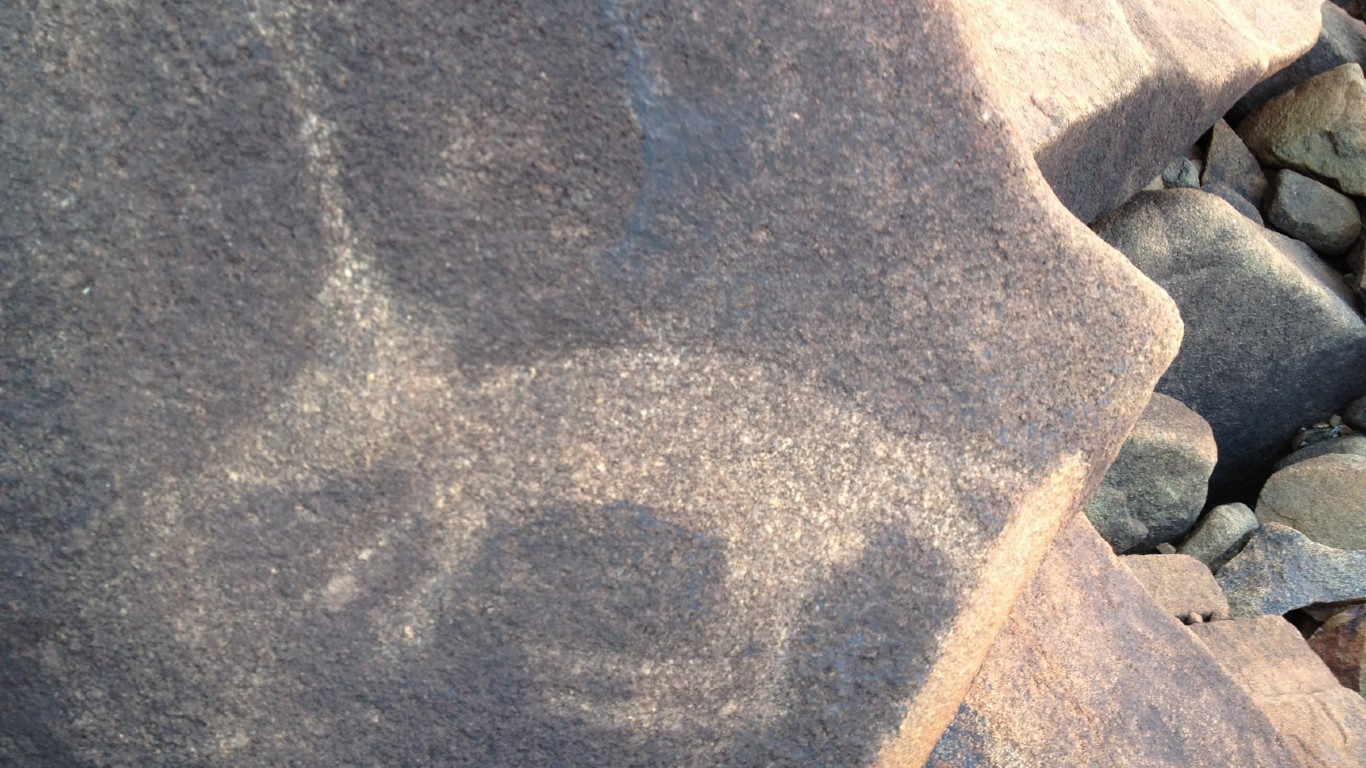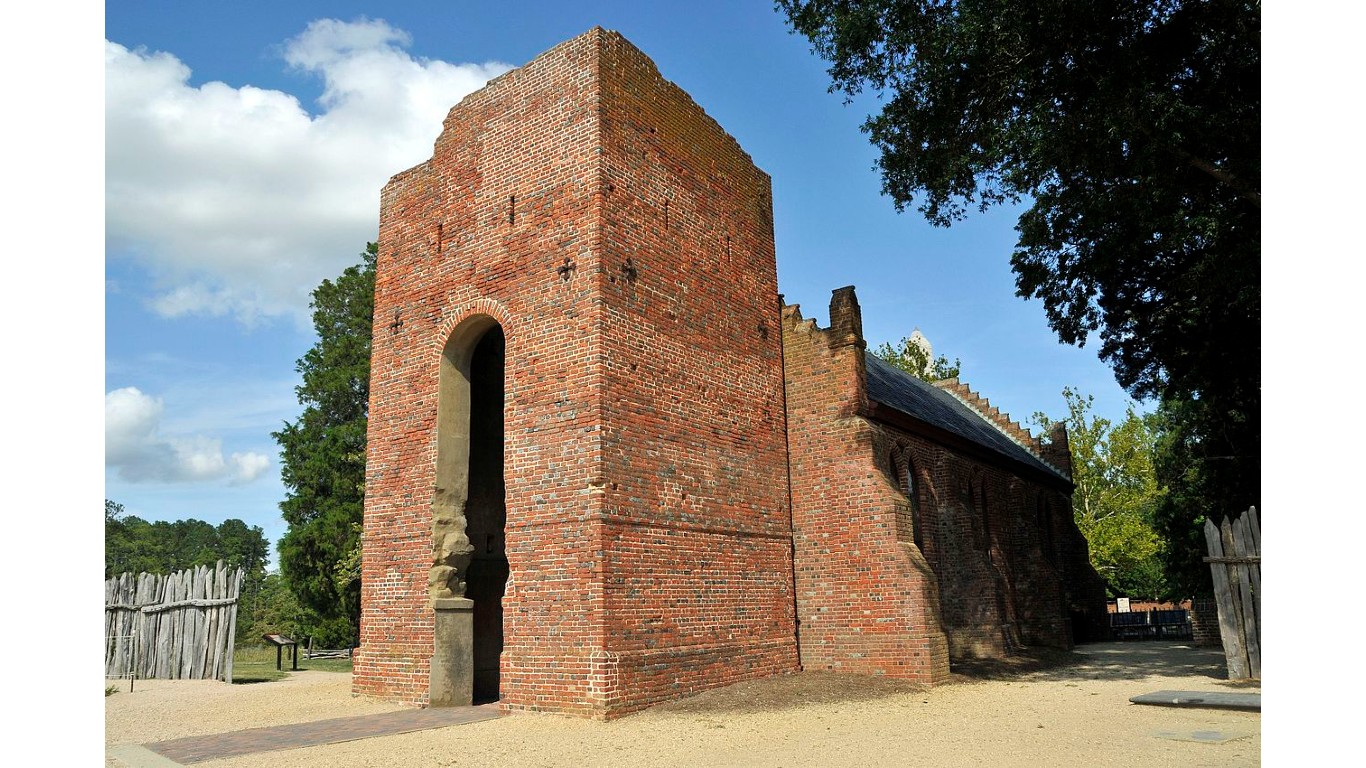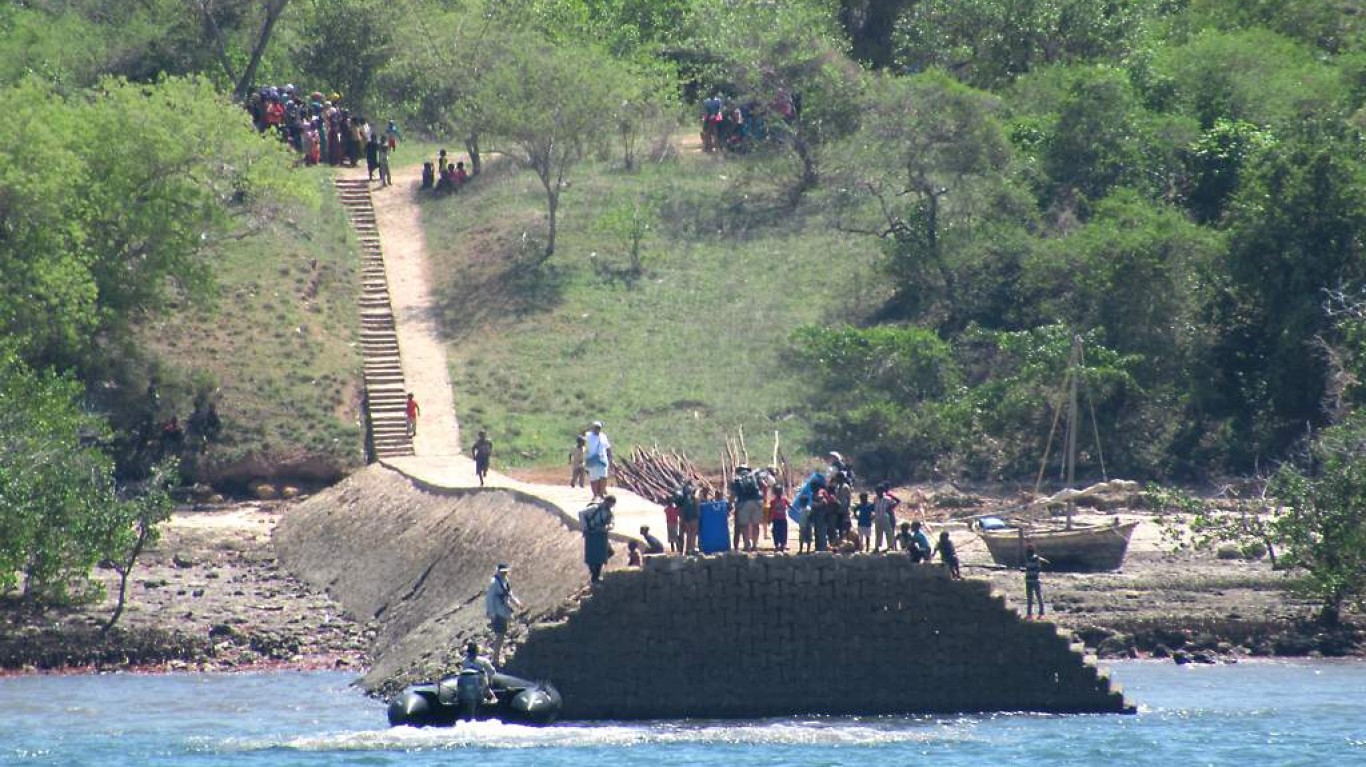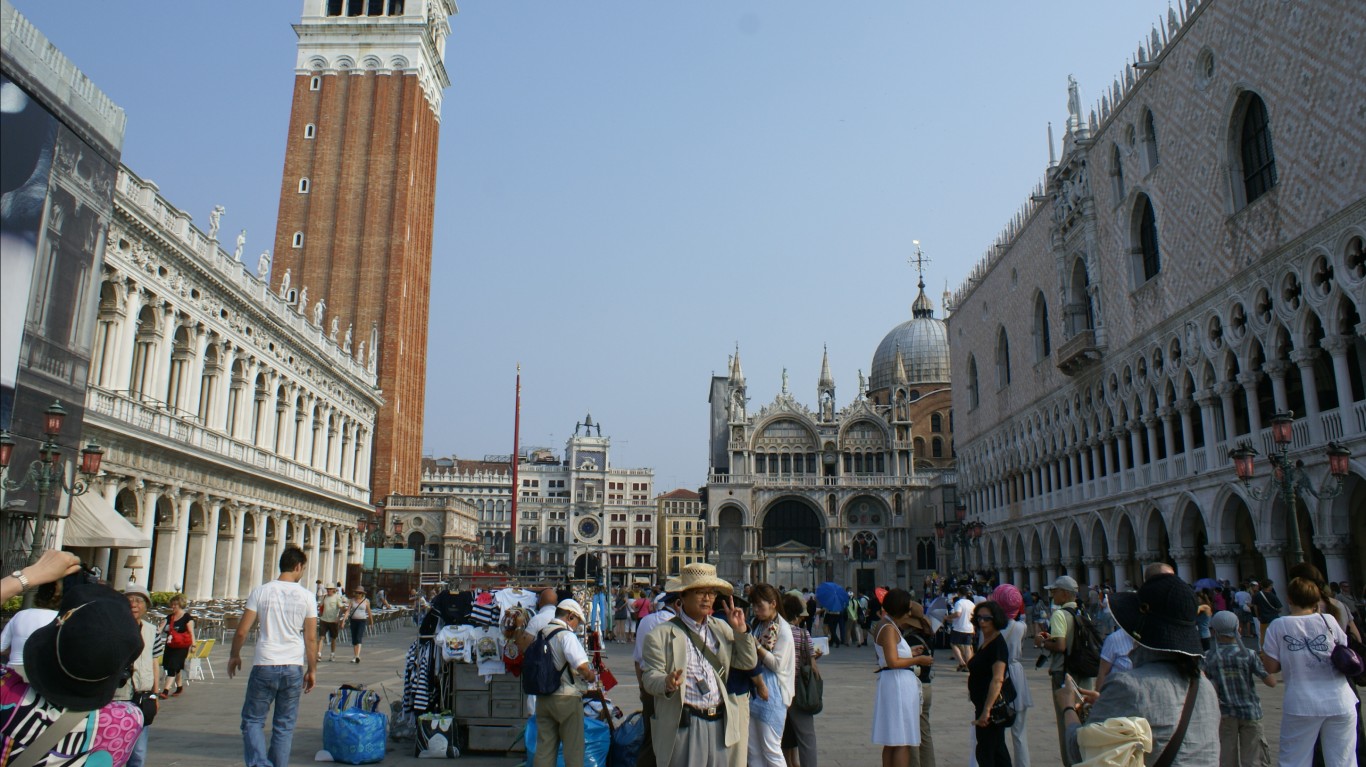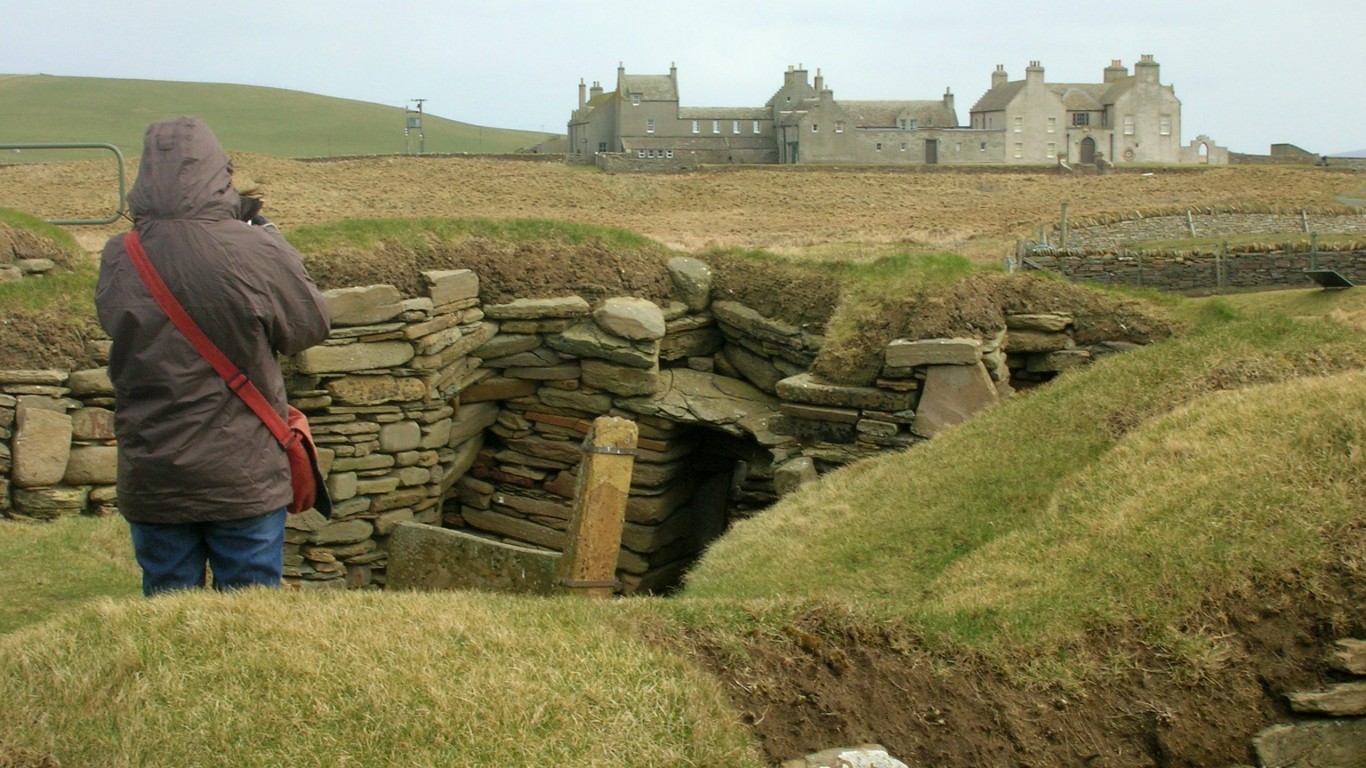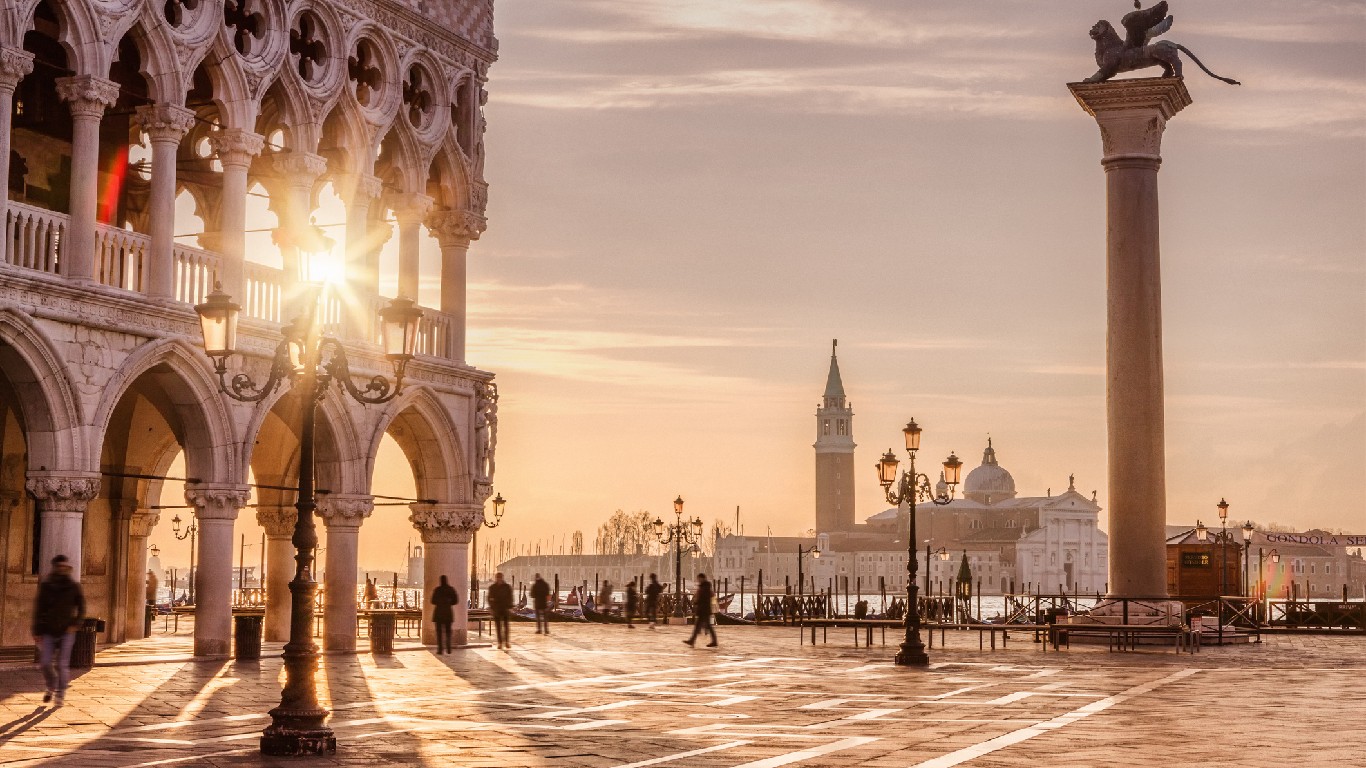
As the industrial revolution took hold, it was becoming apparent to many that the pollution emitted by industry could be damaging not only to human health, but to the built environment as well. Before it was completed, the builders of the Houses of Parliament could see that soot and pollutants were already degrading stone surfaces. In 1873, conservators in Florence, Italy, brought the 400-year-old statue of David indoors because it was discoloring and decaying outdoors.
The primary culprit in destroying landmarks since World War II has been acid rain, formed when emissions of sulfur dioxide, mainly from power plants, and nitrogen oxides, mainly from automobiles, combine with water to make sulfuric and nitric acids. Acid rain is very destructive to buildings and sculpture, particularly those built of marble and limestone, turning seemingly indestructible materials fragile, and causing surface areas to stain and flake away.
Fortunately, the environmental laws of the past 50 years have greatly reduced the threat of acid deposition by controlling chemical emissions from power generation, industry, and automobiles. While the United States, Canada, and Western Europe have ended significant acid rain damage, parts of the world are still struggling with the problem, particularly in Asia. China’s acid rain is actually getting worse because of the country’s heavy reliance on coal. (These are the 20 countries responsible for nearly all global emissions.)
Though the problem of acid is solvable, a far more serious environmental scourge is far less manageable and is beginning to cause irreversible damage to our cultural landmarks. Climate change is no longer a future threat, it is already impacting the built world, just as it is tragically plaguing human populations. (These are natural landmarks already damaged or destroyed by climate change.)
To find human-made landmarks damaged or destroyed by pollution or climate change, 24/7 Wall St. reviewed reports from several sources, including CyArk, a nonprofit organization that digitally archives significant cultural heritage, and UNESCO, a United Nations organization that, among other things, documents important cultural sites and the threats they face. Other sources we reviewed have particular expertise regarding environmental impacts on our cultural heritage, such as the Union of Concerned Scientists.
Whether from bigger, hotter forest fires in drying regions, flooding caused by storms and more intense rain events, or erosion and salt intrusion from storm surges and sea level rise, landmarks around the world are at risk, and many are already severely damaged.
Click here to see human-made landmarks climate change is destroying
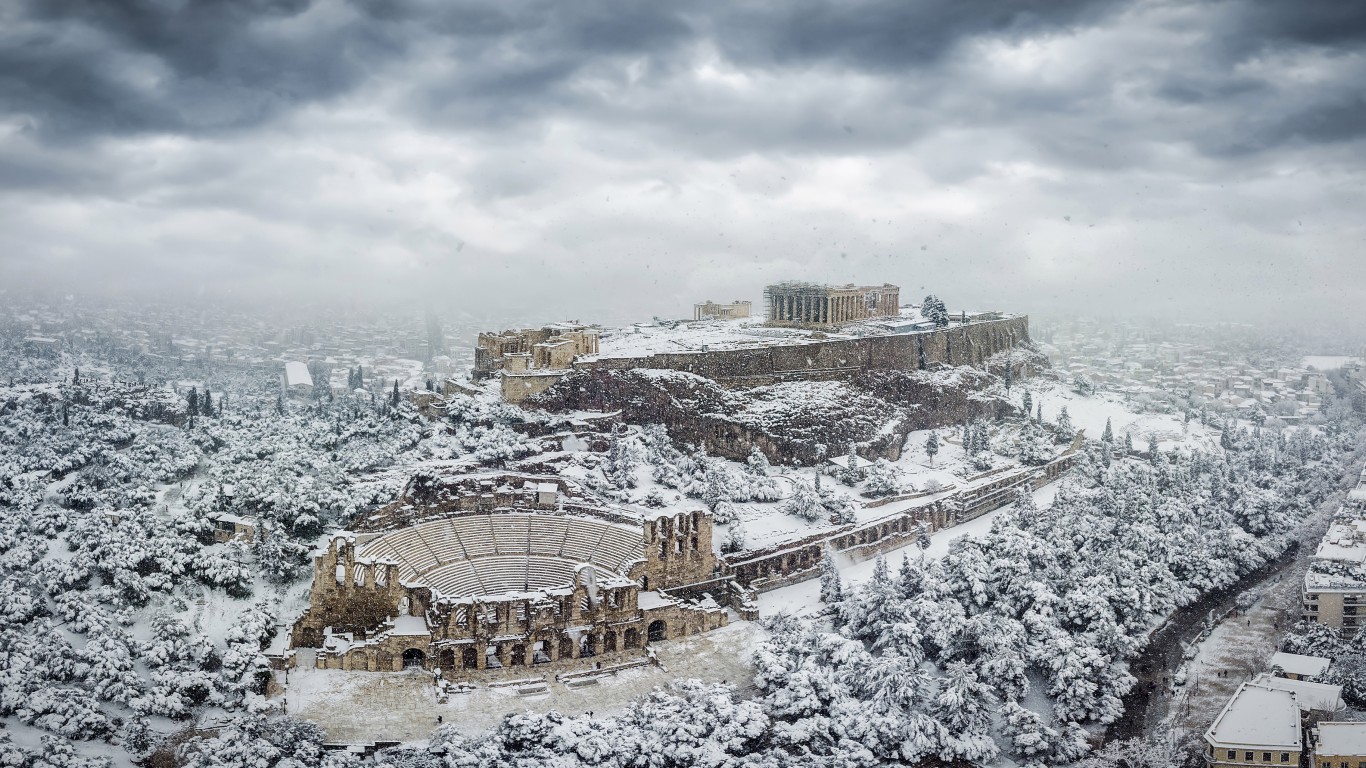
Acropolis
> Location: Athens, Greece
One of the world’s most famous landmarks, this symbol of democracy is home to several monuments dating back to the golden age of Greece. Having survived for 24 centuries, the Acropolis is now being degraded by acid rain, a product of industrial and automobile pollution that has accompanied modern life in Athens. The Parthenon’s marble reliefs are deteriorating and losing detail, with fragments falling away. The very structure of the monument has been compromised, making complete collapse a possibility.
[in-text-ad]

Britain’s Houses of Parliament
> Location: London, England
With the original Houses of Parliament destroyed by fire, the building of its replacement in the mid 1800s revealed the threat posed by industrial era pollution. Concerned about natural weathering, a team of experts chose a particular limestone they believed to be resistant to climate. Even before construction was complete, London’s notorious smog and soot was degrading the edifice, bringing to light the threat to architectural buildings posed by pollution.
Chan Chan
> Location: Peru
Six centuries ago, Chan Chan was the largest city in the Americas and the largest adobe city in the world. In its heyday, before it was conquered by the Incas and abandoned, city dwellers were able to repair its structures from the damage wrought by the El Nino storms that occurred every 25 to 50 years. But now the storms are more frequent and intense, fueled by changes in climate, and the resulting rainfall has caused erosion considered “rapid and seemingly unstoppable,” according to a 2007 UNESCO report. Measures have been taken to cover parts of the ancient site and to harden surfaces.
Historic Charleston
> Location: South Carolina, US
Low-lying and almost completely surrounded by water, the historic district of Charlestown has always been vulnerable to flooding and storm impacts. With air and sea temperatures rising, storms and surges are increasing and extreme rain events are becoming more frequent, with the damage already being felt. In 1989, Hurricane Hugo killed 26 people and caused over $6 billion in damage to the city. Absent drastic measures, a predicted 4 feet of sea level rise by the end of the century will totally submerge historic Charleston.
[in-text-ad-2]
Charminar
> Location: Hyderabad, India
Charminar, the singular monument of Hyderabad, India, was replastered in the 1800s. The renewed lime facade should have lasted 800 years but it is already peeling away. Like many of India’s magnificent landmarks, Charminar is a victim of industrial and automobile pollution that plagues all of India. Across the country, measures are being sought to stop the discoloration and weakening of iconic structures, while India continues to be dependent on coal burning for its power.
Ancient Village of Bagerhut
> Location: Bangladesh
In the famously vulnerable coastal region of Bangladesh, an ancient city is showing signs of climate change damage. Bagerhut is a 50 square kilometer UNESCO World Heritage site filled with mosques, bridges, mausoleums, and other structures built in the Bengal Sultanate of the 15th century. Vulnerable to the same storms and flooding that is displacing village populations along the coast, the longer-term and more devastating threat is sea level rise. Already, salt intrusion is weakening the base of the city’s largest and most famous building, the Nine Dome Mosque.
[in-text-ad]

Cologne Cathedral
> Location: Cologne, Germany
It took 600 years to build the magnificent gothic Cathedral of Cologne Germany, including a 300 year gap in construction. It was finished in the mid 19th century, just as industrialization was beginning to pollute the air. The cathedral withstood the bombings of World War II, though it required repairs. More recently, repairs have been undertaken to replace pollution-damaged stones with more resilient materials.
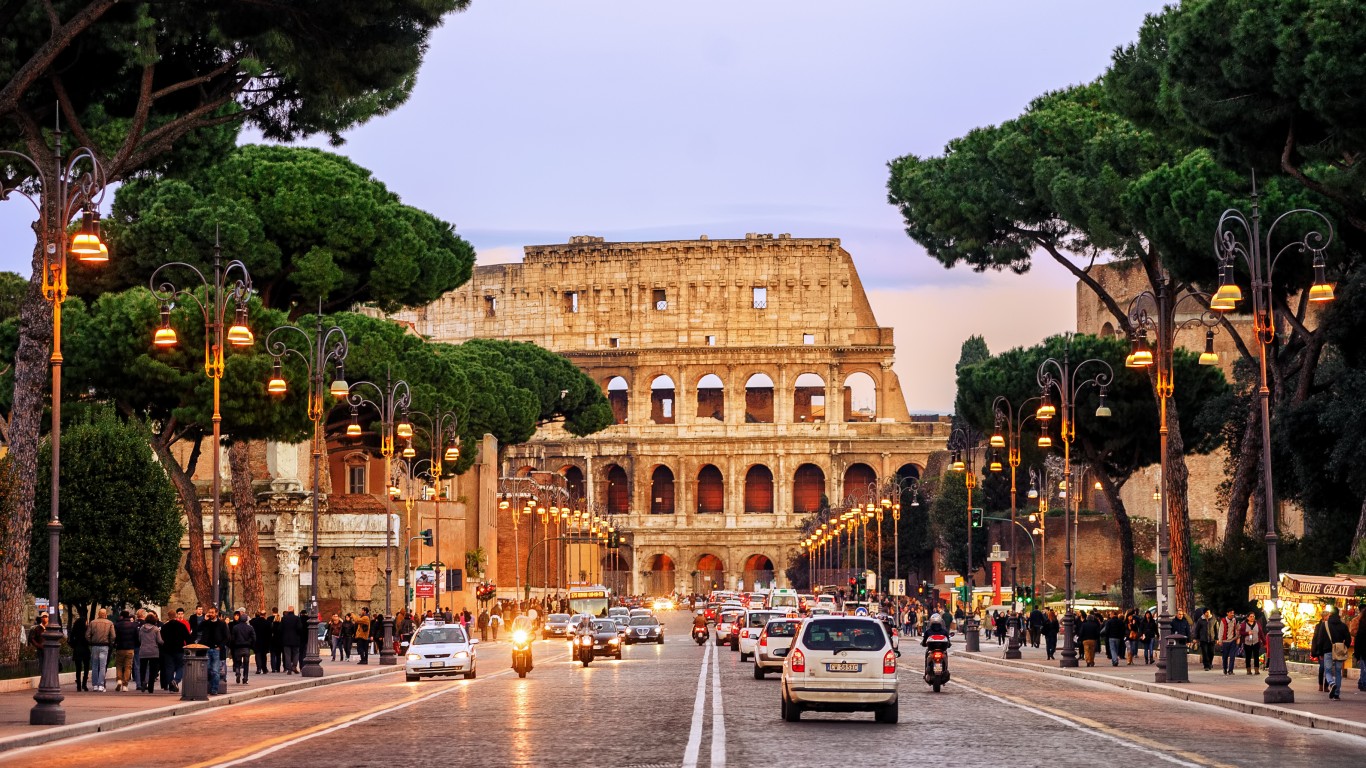
Colosseum
> Location: Rome, Italy
An important phase in the decades-long plan of restoring the Colosseum in Rome was completed in 2016 – the removal of the soot and grime that had hidden the landmark’s light-colored travertine surface. The three year project, funded by Tod’s, a high-end fashion and shoe company, cost 6.5 million euros, a good portion of the 25 million price tag for the entire planned restoration. When the generous gift made the cleaning possible, Rome began diverting traffic from the area surrounding the Colosseum and the Roman Forum, another landmark damaged by pollution from automobile exhaust and emissions from modern industry.
Dampier Rock Art Complex
> Location: Dampier, Australia
Stretching for nearly 300 miles across an archipelago reaching outward from the northwest corner of Australia, the Dampier Rock Art Complex is home to some of the earliest works of humankind, as many as a million petroglyphs are carved into rock faces and outcroppings, some estimated to be 20,000 years old. The art has survived natural weathering for tens of thousands of years, but air pollution from modern day industrial expansion has already erased some of the shallower engravings and threatens almost total destruction of the ancient treasure within the 21st century.
[in-text-ad-2]

District of Columbia Memorials
> Location: Washington, D.C., US
Suffering from a range of assaults, the once smooth and luminescent marble of our nation’s highly recognizable monuments is stained and can feel like sandpaper to the touch. The damage to the Lincoln and Jefferson Memorials is understood to be caused in large part by the exhaust of bus and automobile traffic. The air pollution is worsened by jet fuel burned overhead.
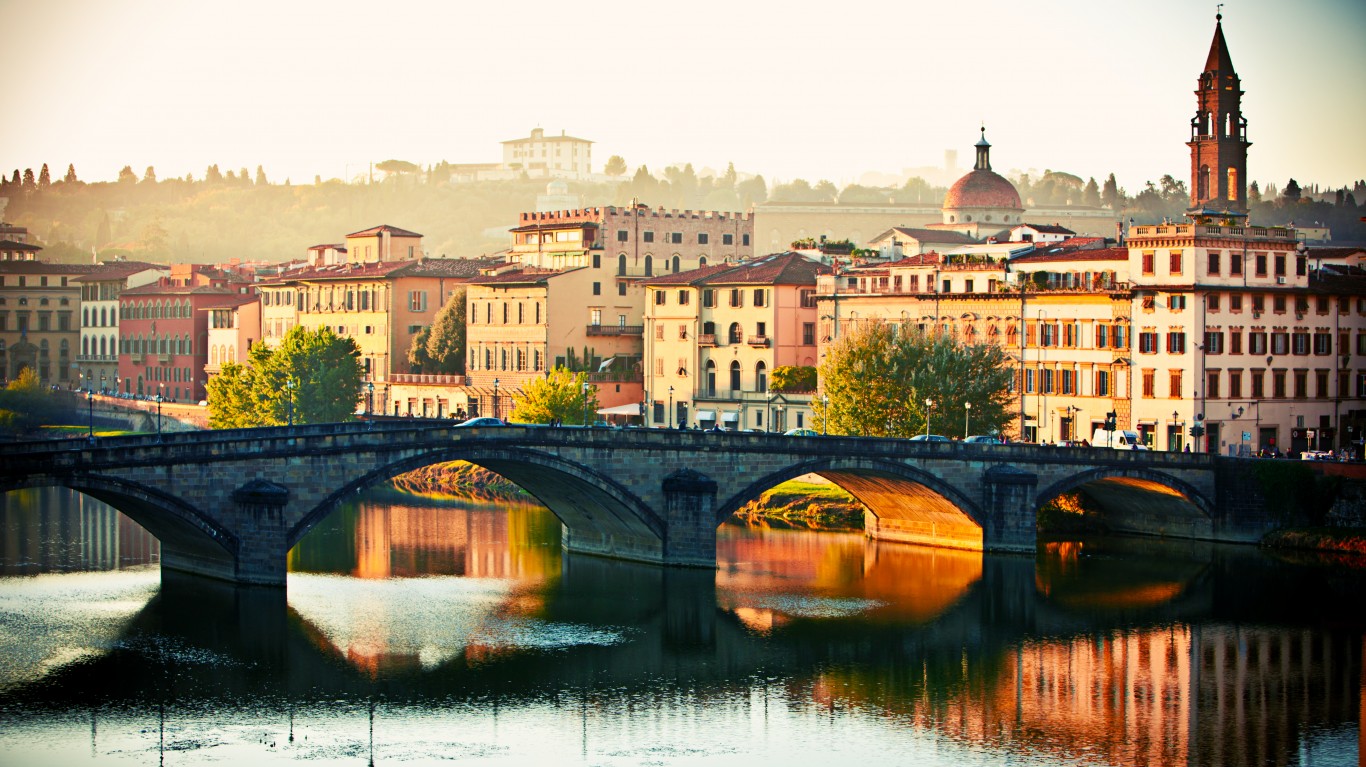
Historic Center of Florence
> Location: Florence Italy
Pollution is particularly damaging to marble, the iconic material of the art and Architecture of Florence. Statues have been moved indoors and replaced with modern copies. But the damage to buildings pose a more difficult problem, with pieces of sandstone and marble facades literally falling into the streets. The city recognized the increasing threat of pollution in the 1960s. A newly appointed Superintendent of Monuments was then quoted as saying, “I’ve been asked to preside at a disaster,” according to The New York Times.
[in-text-ad]
Historic Jamestown
> Location: Virginia, US
Jamestown, the country’s first settlement, and its archeological treasures are already under siege by intense storms, ocean surges, and sea level rise. The remains of 400-year-old buildings were submerged, and nearly 1 million historic artifacts were damaged by Hurricane Isabel in 2003. It is likely that Jamestown will be underwater by the end of the century, but efforts continue to preserve what can be saved of this legendary piece of American history.
Kennedy Space Center
> Location: Cape Canaveral, Fl
The launch point for the missions that put humans in space and on the moon, Kennedy Space Center is struggling to hold back the menace of climate change. Like most of Florida, Cape Canaveral is low lying and vulnerable to sea level rise. The dunes built to protect space infrastructure have been less than successful, unable to reliably survive storms themselves.
Kilwa Kisiwani
> Location: Tanzania
Once hailed as one of the most beautiful cities in the world, Kilwa Kisiwani, an island off the coast of Tanzania, was a major port from the ninth to the19th century. Its ruins, including a magnificent mosque and a historic palace, are now a tourist attraction. Having been damaged by sea level rise and erosion, compounded by the deterioration caused by human activity, the island was placed on the UNESCO danger list in 2004 after several buildings collapsed. Though the site remains vulnerable to the impacts of climate change, conservation efforts resulted in its removal from the list in 2014.
[in-text-ad-2]

Longmen Grottoes
> Location: Henan Province, China
Extremely famous in China but unknown to most westerners, the Longmen Grottoes of Henan Province contain over 100,000 mostly Buddhist statues, dating back over 15 centuries. The statues are carved into caves and niches in the bluffs above the Yi River, extending for over a half mile. The art is suffering from a combination of natural deterioration and pollution, which is causing salt and other chemicals to seep into crevices, weakening the structure of the Grottoes. Some of the niches have already collapsed, destroying their contents.
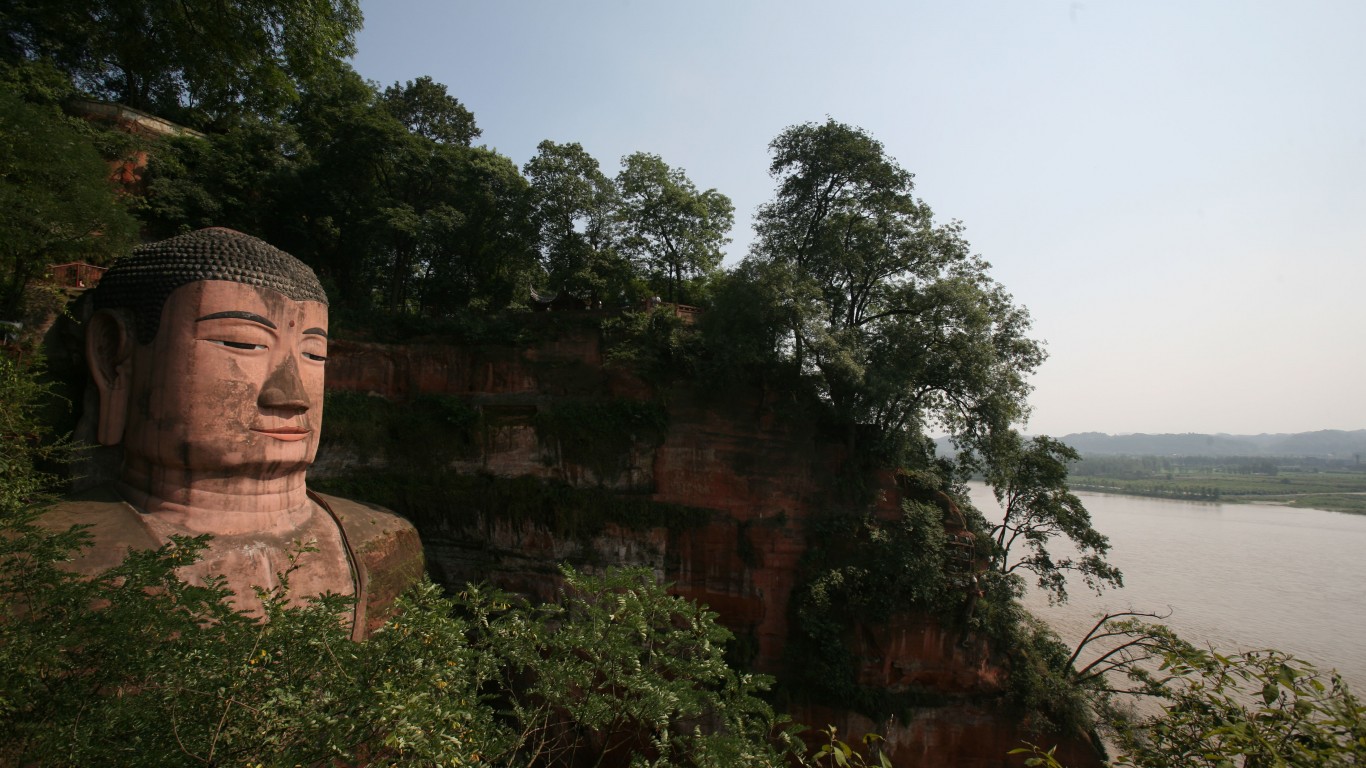
Leshan Buddha
> Location: Sichuan Province, China
Mount Emei in the Sichuan province of China is the historic center of Buddhism and home to many Buddhist temples and shrines. The most famous shrine is the immense statue of the Buddha carved into a sandstone cliff and measuring over 230 feet in height. Having withstood 14 centuries of weathering, the statue has in recent times suffered visible damage inflicted by industrial pollution. Soot from local factories and coal-fired power plants and acid rain caused by pollutants have turned the Buddha’s nose black and weakened the statue’s structure, causing curls of his hair to break away.
[in-text-ad]
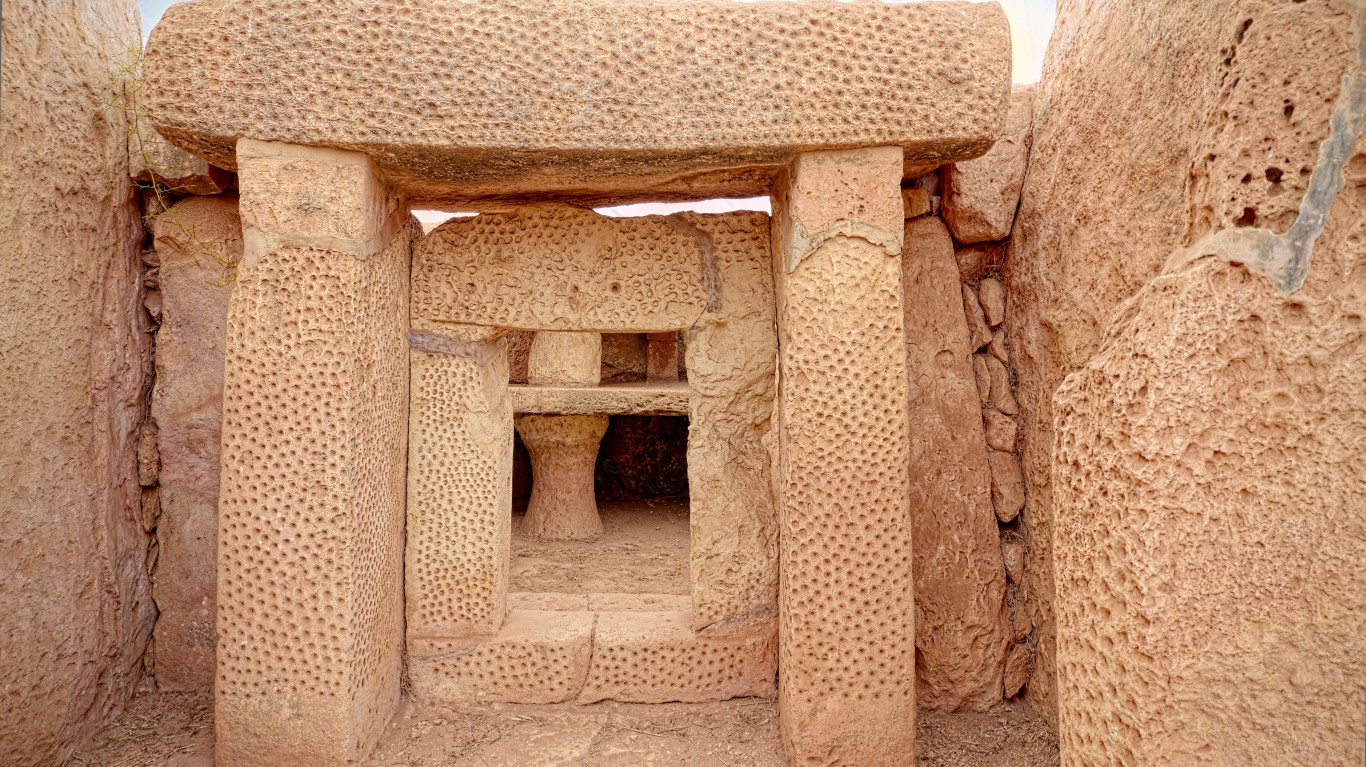
Megalithic Temples of Malta
> Location: Malta
The seven Megalithic Temples, described by UNESCO as being reasonably well-preserved, have survived for 4,500 to 5,600 years. But modern times have brought pollution and changes in climate that are damaging the structural integrity and stone surfaces of the antiquities. Archeological preservationists have covered the site in an effort to protect the unique temples from further decay.
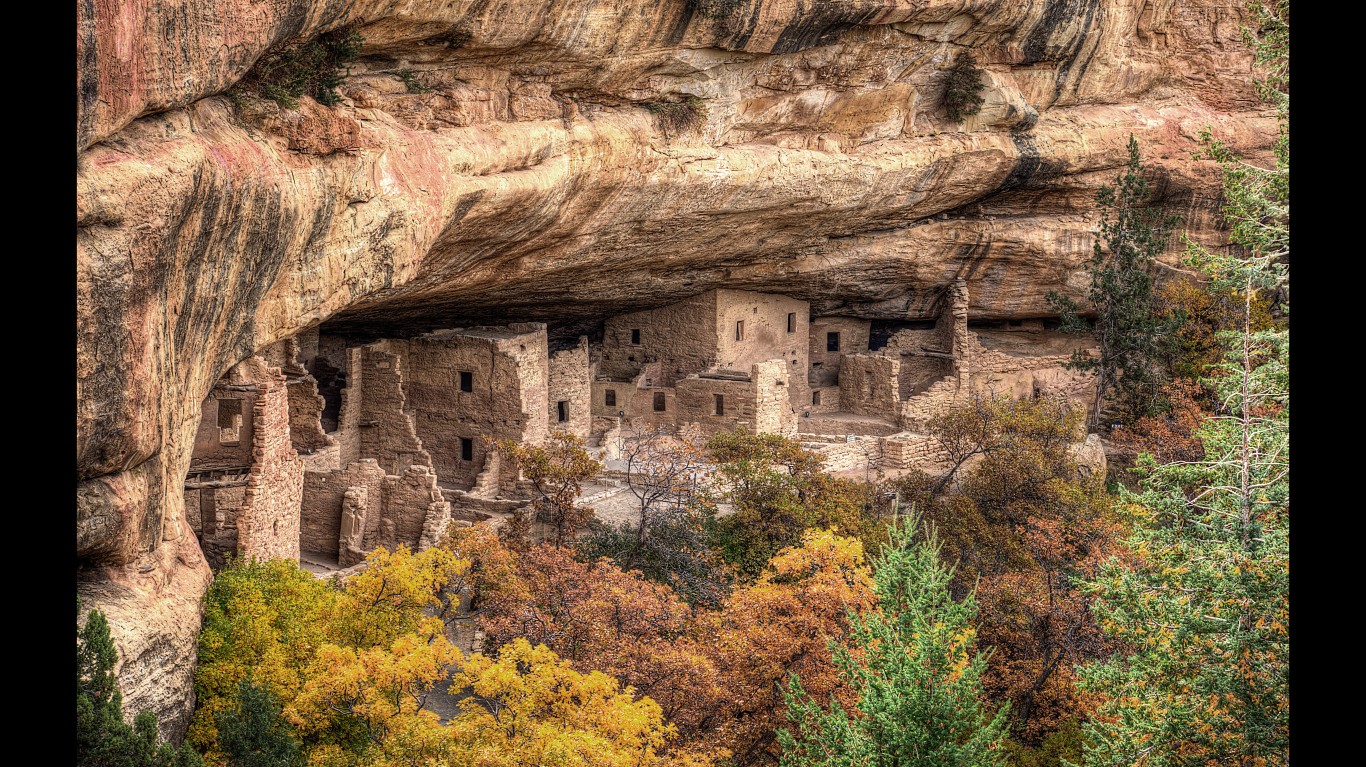
Mesa Verde
> Location: Colorado, US.
Since the area’s christening as a national park, the greatest threats to the famous Pueblo cliffside dwellings and their artifacts were considered to be looting and damage from human intrusion. Now, a far greater peril threatens the historic site, fire. Temperatures have steadily risen in the American Southwest over the past 50 years, drying the landscape and reducing the moisture available in the region, resulting in horrific wildfires. In the summer of 2000, the Bircher and Pony fires burned nearly half of the Mesa Verde National Park’s 52,000 acres, damaging buildings and infrastructure but sparing the ruins.

Moai of Easter Island
> Location: Easter Island
Easter Island is known for the disappearance of its early civilization and for the monolithic statues, called Moai, that its lost tribes produced. Archeologists are now concerned that the Island and the clues to the mysteries of its past are already seeing damage wrought by a changing climate. Tourism has resulted in some harm, but erosion is the greatest threat to the island. It has already destroyed beaches and burial sites and is undermining the cliffs supporting the monoliths.
[in-text-ad-2]

Native Alaskan Villages
> Location: Alaska, US
Alaska is warming faster than the lower 48 states, with a 3 degree increase in temperature attributable to climate change. In the northwest corner of Alaska, permafrost is melting, protective sea ice is shrinking at a rate of 10% each year, and battering sea waves are growing in height, all leading to a rapid erosion of the coast. The region, noted for its ancient villages and historic artifacts, is losing its battle with climate, as native populations are displaced and archeological treasures are lost to the sea.

New Orleans
> Location: New Orleans, Louisiana, US
Long known for its raucous festivities, New Orleans is also remembered for one of the most tragic weather and climate-related events of modern times. With its protective levees collapsing, the city was inundated and the poorest neighborhoods destroyed by Hurricane Katrina in 2005. The city suffered 1,800 deaths and an estimated $150 billion in damage. Its most famous neighborhood, the historic Latin Quarter, suffered only wind damage because of its higher elevation, but the entire city and its coastal neighbors remain at high risk from the future impacts of climate change.
[in-text-ad]
St. Mark’s Square
> Location: Venice, Italy
The city of Venice is the poster child for the calamity of sea level rise, and St. Mark’s Square is the most recognizable landmark in the sinking city. It is also Venice’s lowest spot, 30 inches above sea level. St. Mark’s Basilica, which stands 4.5 inches above the piazza, has been flooded six times in the last 1200 years, with four of the floods occurring in the last 20.
Skara Brae
> Location: Orkney Peninsula, Scotland
Older than the pyramids and Stonehenge are the ruins of Skara Brae, one of the world’s best examples of a stone age village. Situated close to the coastline and only feet above the sea, it has nonetheless survived 5,000 years of weather, storms, and battering by the ocean waves. But as air and ocean temperatures rise, storms become more threatening, and the sea rises, the land at either end of the village’s protective sea wall is eroding. Another ancient landmark in the region, the iron age buildings at Hodgalee already been overcome with sea water.

Statue of Liberty
> Location: New York, New York, US
In October of 2013, New York City experienced the worst storm in its history, Superstorm Sandy. Most of Liberty and Ellis Islands were inundated. Damages amounted to $77 million, with operating systems ruined and a caretakers’ brick house destroyed. With the understanding that the damage was attributable to the growing menace of climate change and sea level rise, the house will not be rebuilt.
[in-text-ad-2]
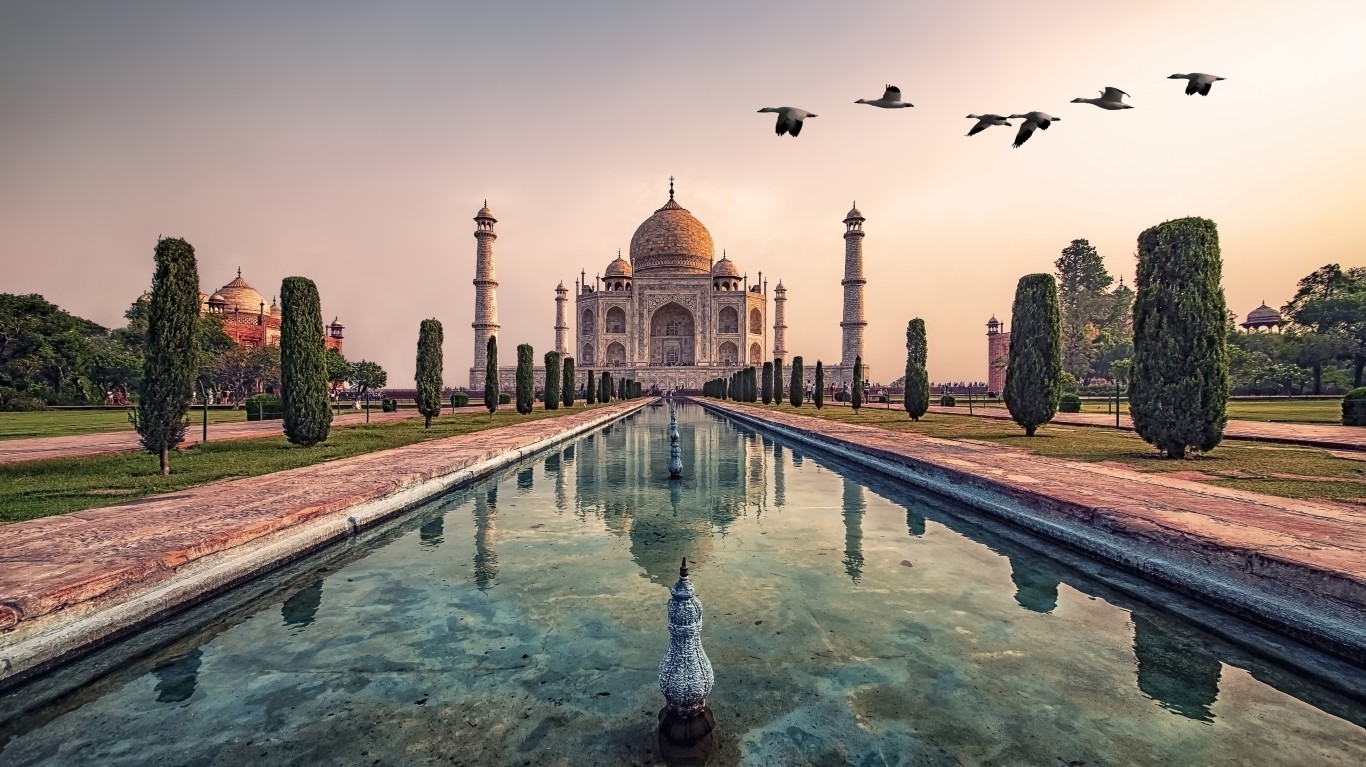
Taj Mahal
> Location: Agra, India
One of the world’s most stunning and recognizable buildings, the Taj Mahal in Agra, India, has lost its surface radiance to modern pollution. Automobiles, industry, and a local oil refinery have fueled the ravages of acid rain, which, paired with naturally occurring oxidation, is turning the monument’s once lustrous white facade a pale yellow.
100 Million Americans Are Missing This Crucial Retirement Tool
The thought of burdening your family with a financial disaster is most Americans’ nightmare. However, recent studies show that over 100 million Americans still don’t have proper life insurance in the event they pass away.
Life insurance can bring peace of mind – ensuring your loved ones are safeguarded against unforeseen expenses and debts. With premiums often lower than expected and a variety of plans tailored to different life stages and health conditions, securing a policy is more accessible than ever.
A quick, no-obligation quote can provide valuable insight into what’s available and what might best suit your family’s needs. Life insurance is a simple step you can take today to help secure peace of mind for your loved ones tomorrow.
Click here to learn how to get a quote in just a few minutes.
Thank you for reading! Have some feedback for us?
Contact the 24/7 Wall St. editorial team.
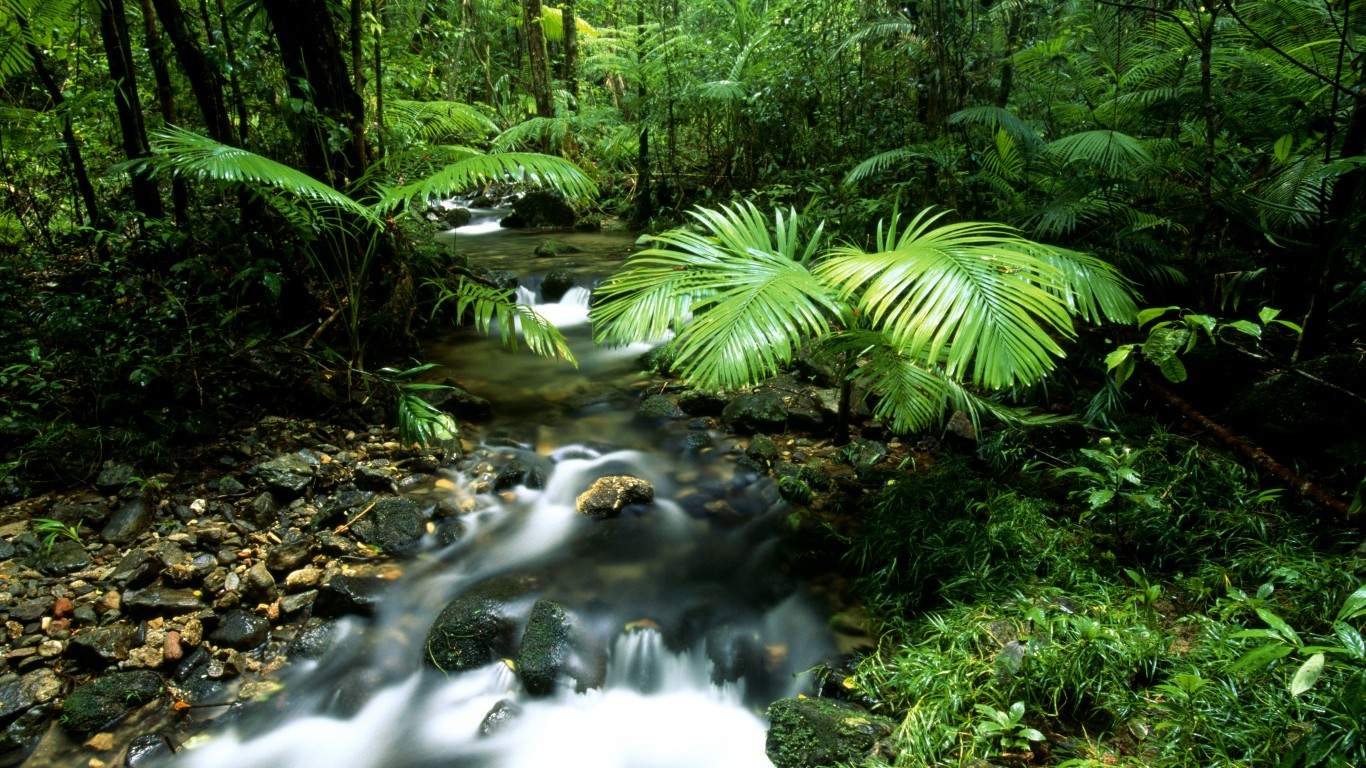 24/7 Wall St.
24/7 Wall St.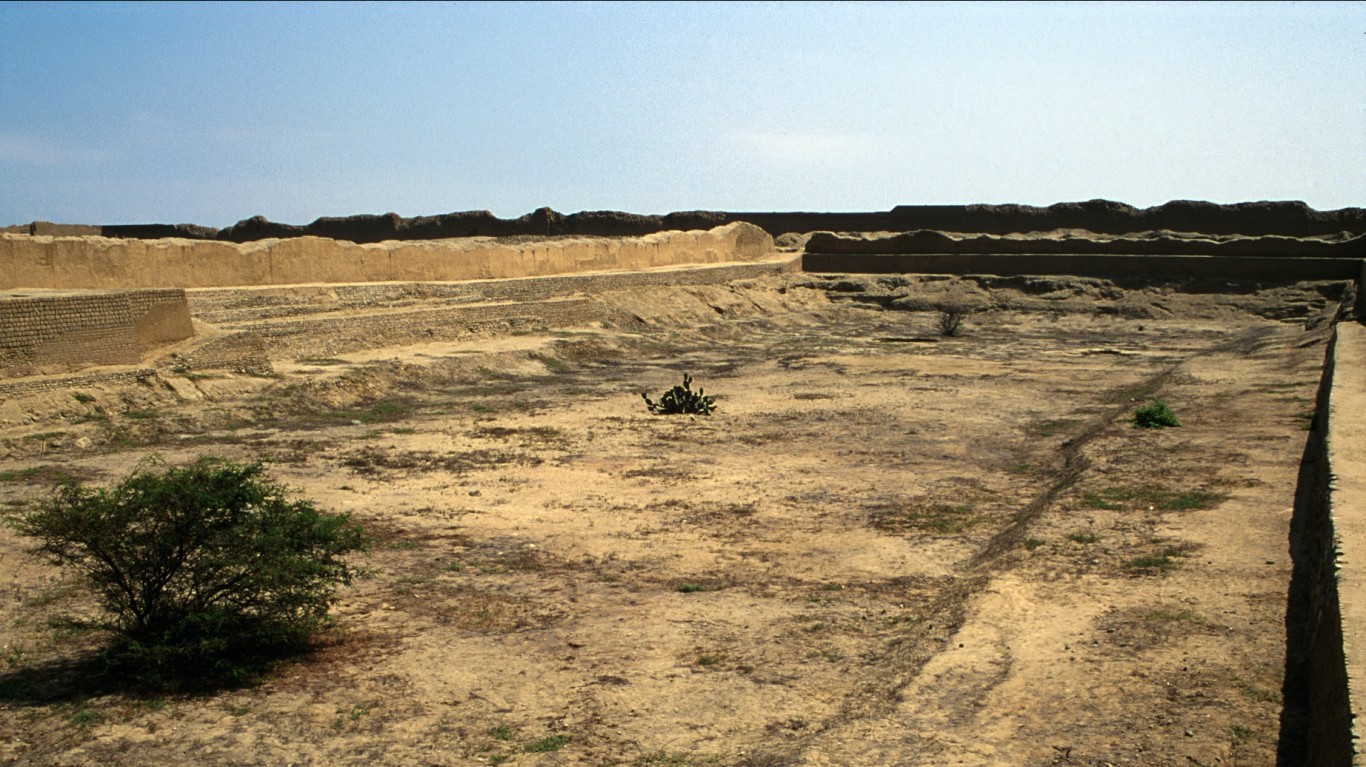
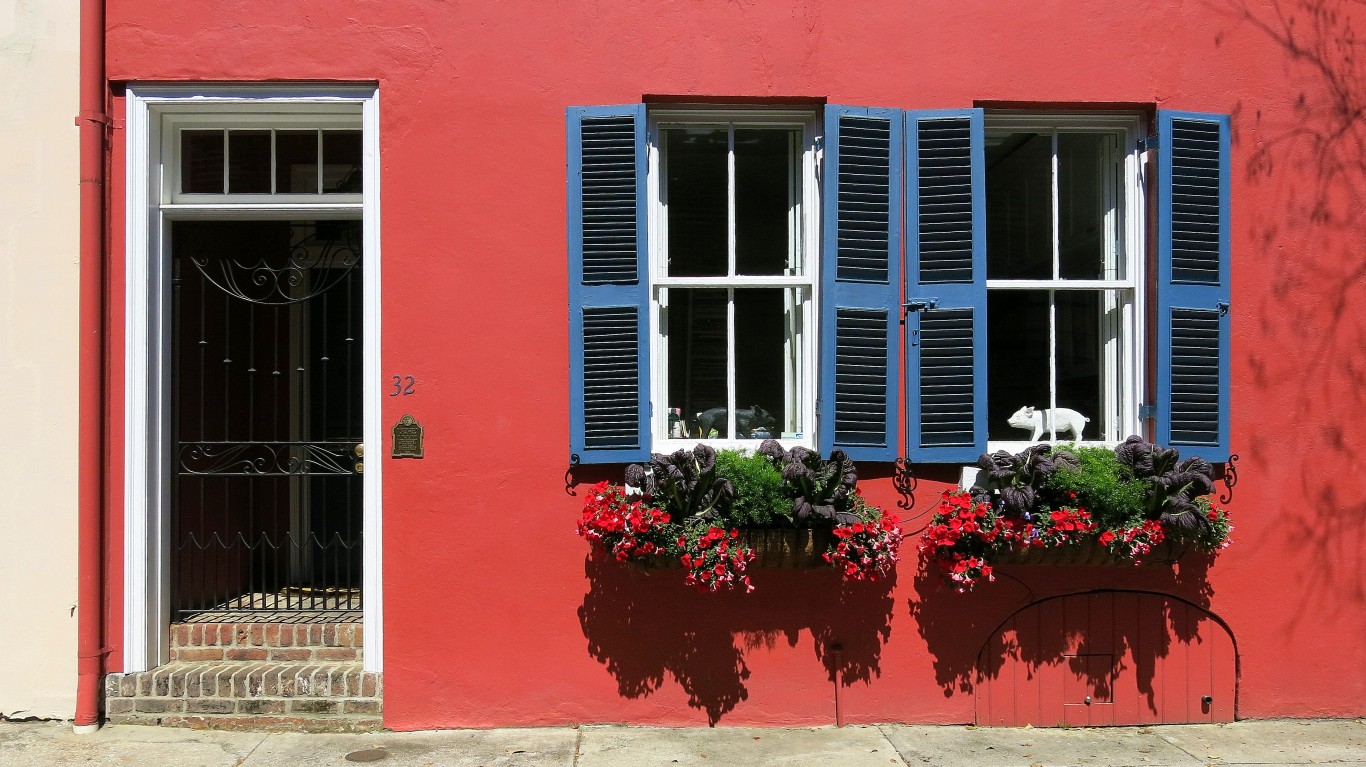
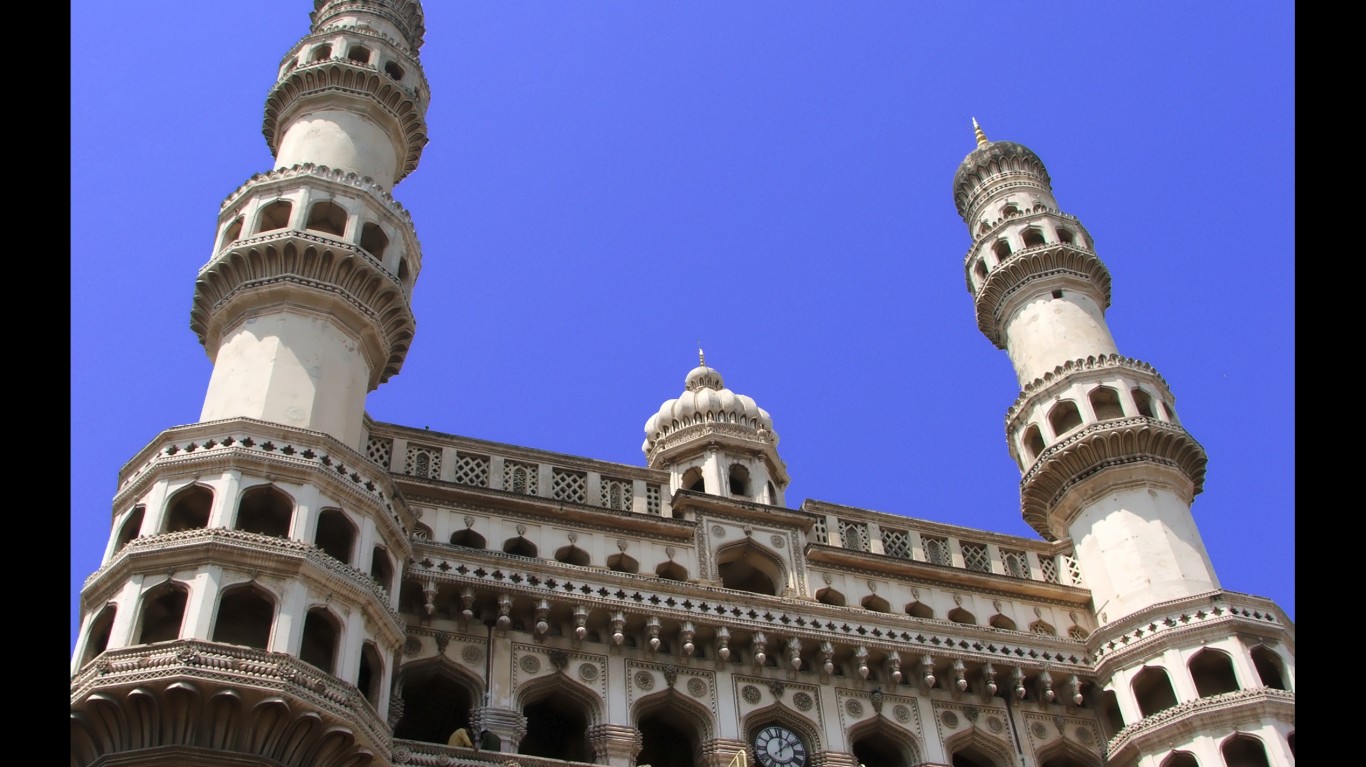

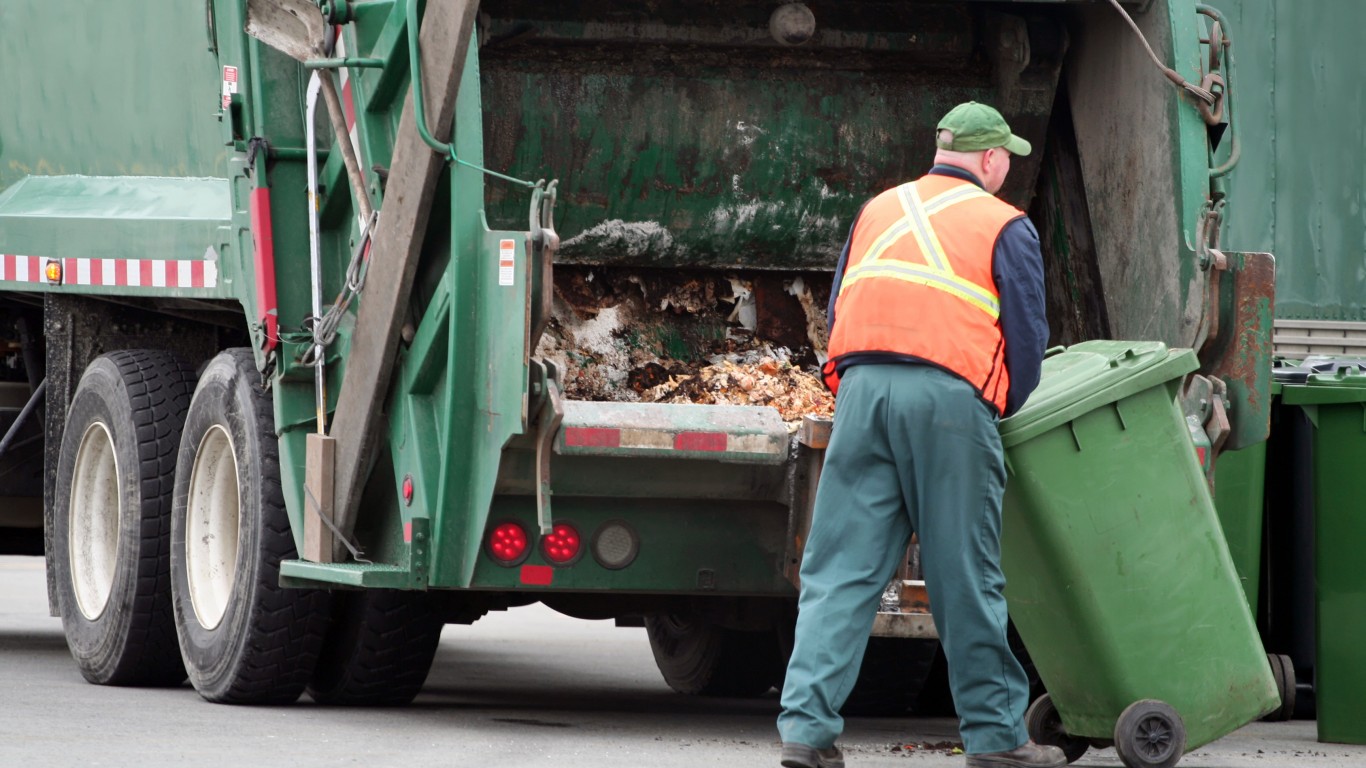 24/7 Wall St.
24/7 Wall St.